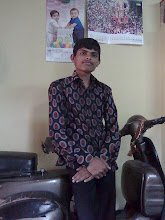UNIT I
Basic Computing elements of analog computer, time and amplitude scaling simulation of linear simple
and simultaneous differential equations and transfer functions, nonlinear function generators.
UNIT II
Requester transfer and Micro- Operations: Register transfer language, Inter – Register transfer,
Arithmetic, Logic and shift micro operations, Control functions.
Computer Organization and Design: Instruction, codes computer instructions, Timing and, control
Execution of instructions, Input-Output and interrupts, Design of computer.
UNIT III
Central Processor organization: Processor bus organization, ALU, Stack Organization, Instruction
formats, Addressing modes, Data transfer and manipulation, Program control, Parallel processor.
Micro program control organization: Control memory, Address sequencing, Microprogram exaple,
Microprogram sequencer, & Microinstruction formats.
UNIT IV
Arithmetic Processor Design: Comparison and subtraction, Algorithm for addition, Subtraction,
Multiplication, division, Processor Configuration, Design of Control.
Arithmetic algorithms: Arithmetic with signed 2’s complement numbers, Multiplication and Division,
Floating point arithmetic operations, Decimal Arithmetic Unit and operations
UNIT V
I/O Organization: I/O interfaces, asynchronous data transfer, DMA, Priority interrupt, I/O processor,
Multiprocessor system organization.
Memory organization: Various memories – Auxiliary, Associative, Cache, Microcomputer, Virtual ones,
and Memory Hierarchy, Memory Management hardware.
Computer software: Assembly language, Assembler, program loops, subroutines, system.
Text Books:
1. Computer System Architecture by M. M. Mano
2. Computer Architecture and Organization, J.P. Hayes Int’1 student edition, McGraw – Hill.
Reference books:
1. Structured computer organization 3rd Edn by A. Stannabaum.
2. Computer Organization by V.C.Hamacher et al McGraw.
3. Introduction of Digital computer Design by V. Rajaraman & T.Radhakrishnman.
4. Analog computation and simulation by V. Rajaraman PHI
Basic Computing elements of analog computer, time and amplitude scaling simulation of linear simple
and simultaneous differential equations and transfer functions, nonlinear function generators.
UNIT II
Requester transfer and Micro- Operations: Register transfer language, Inter – Register transfer,
Arithmetic, Logic and shift micro operations, Control functions.
Computer Organization and Design: Instruction, codes computer instructions, Timing and, control
Execution of instructions, Input-Output and interrupts, Design of computer.
UNIT III
Central Processor organization: Processor bus organization, ALU, Stack Organization, Instruction
formats, Addressing modes, Data transfer and manipulation, Program control, Parallel processor.
Micro program control organization: Control memory, Address sequencing, Microprogram exaple,
Microprogram sequencer, & Microinstruction formats.
UNIT IV
Arithmetic Processor Design: Comparison and subtraction, Algorithm for addition, Subtraction,
Multiplication, division, Processor Configuration, Design of Control.
Arithmetic algorithms: Arithmetic with signed 2’s complement numbers, Multiplication and Division,
Floating point arithmetic operations, Decimal Arithmetic Unit and operations
UNIT V
I/O Organization: I/O interfaces, asynchronous data transfer, DMA, Priority interrupt, I/O processor,
Multiprocessor system organization.
Memory organization: Various memories – Auxiliary, Associative, Cache, Microcomputer, Virtual ones,
and Memory Hierarchy, Memory Management hardware.
Computer software: Assembly language, Assembler, program loops, subroutines, system.
Text Books:
1. Computer System Architecture by M. M. Mano
2. Computer Architecture and Organization, J.P. Hayes Int’1 student edition, McGraw – Hill.
Reference books:
1. Structured computer organization 3rd Edn by A. Stannabaum.
2. Computer Organization by V.C.Hamacher et al McGraw.
3. Introduction of Digital computer Design by V. Rajaraman & T.Radhakrishnman.
4. Analog computation and simulation by V. Rajaraman PHI
